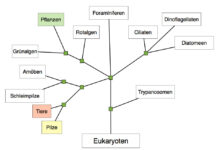System Analysis: 7 Powerful Steps to Master the Ultimate Breakdown
Ever wondered how complex software, business workflows, or IT infrastructures are designed to work seamlessly? It all starts with system analysis—a powerful process that uncovers needs, solves problems, and sets the foundation for success.
What Is System Analysis? A Clear Definition

System analysis is the structured process of examining a system—whether it’s technical, organizational, or procedural—to understand its components, functions, and interactions. The goal? To identify problems, improve efficiency, and support decision-making for system development or enhancement.
The Core Purpose of System Analysis
At its heart, system analysis aims to bridge the gap between what a system currently does and what it should do. This involves gathering requirements, analyzing workflows, and modeling solutions. It’s not just about fixing broken parts—it’s about optimizing the entire ecosystem.
- Identify inefficiencies in current systems
- Define functional and non-functional requirements
- Support the design of new or improved systems
“System analysis is the compass that guides every successful IT project.” — TechTarget
Types of Systems Analyzed
System analysis isn’t limited to software. It applies across various domains:
- Information Systems: Databases, ERP, CRM platforms
- Business Processes: Order fulfillment, customer service workflows
- Engineering Systems: Control systems, automation networks
- Organizational Systems: Human resource structures, communication channels
Each type requires tailored analysis techniques, but the underlying principles remain consistent: understand, evaluate, improve.
The 7-Step System Analysis Process Explained
A successful system analysis follows a structured methodology. Here are the seven essential steps that professionals use to dissect and enhance any system.
Step 1: Problem Identification
Every analysis begins with a problem. Is the current system slow? Are users frustrated? Are costs too high? Identifying the root issue is crucial.
- Conduct stakeholder interviews
- Review performance metrics
- Analyze user complaints and feedback
Without a clear problem statement, the analysis risks going off track. For example, a retail company might notice declining sales due to slow checkout systems—this becomes the focal point for system analysis.
Step 2: Information Gathering
Once the problem is defined, the next step is collecting data. This phase involves both qualitative and quantitative research.
- Surveys and questionnaires
- Document reviews (manuals, reports, logs)
- Observation of current workflows
- Workshops with end-users and managers
Tools like Lucidchart or draw.io help visualize processes during this stage. The more accurate the data, the better the analysis.
Step 3: Data Analysis and Modeling
This is where raw data transforms into insights. Analysts use modeling techniques to represent system behavior.
- Data Flow Diagrams (DFDs)
- Entity-Relationship Diagrams (ERDs)
- Use Case Diagrams
- Process Flowcharts
For instance, a DFD can show how customer data moves through an e-commerce platform—from order entry to payment processing. These models highlight bottlenecks and redundancies.
Step 4: Requirements Specification
After analyzing the current system, the next step is defining what the new or improved system must do. This results in a Software Requirements Specification (SRS) document.
- Functional Requirements: What the system should do (e.g., generate invoices, process refunds)
- Non-Functional Requirements: Performance, security, scalability (e.g., handle 10,000 users simultaneously)
- User Requirements: Needs from the end-user perspective
A well-documented SRS prevents scope creep and miscommunication between developers and stakeholders.
Step 5: Feasibility Study
Before moving forward, it’s essential to assess whether the proposed system is viable. This involves evaluating five key areas:
- Technical Feasibility: Do we have the technology and expertise?
- Economic Feasibility: Will the benefits outweigh the costs?
- Operational Feasibility: Can the organization adapt to the change?
- Schedule Feasibility: Can it be delivered on time?
- Legal Feasibility: Are there compliance or regulatory issues?
Tools like cost-benefit analysis and SWOT analysis are commonly used here. A project might be technically possible but economically unviable—this step helps avoid costly mistakes.
Step 6: Design Recommendations
Based on the analysis, the system analyst presents design options. These may include:
- Proposed architecture (monolithic vs. microservices)
- Technology stack recommendations
- User interface mockups
- Integration strategies with existing systems
This phase often involves collaboration with architects, developers, and UX designers. The goal is to offer a clear roadmap for implementation.
Step 7: Reporting and Presentation
The final step is communicating findings to stakeholders. This includes:
- Executive summaries
- Technical documentation
- Visual presentations and dashboards
- Recommendations for next steps
Clarity is key. Decision-makers need to understand the problem, the proposed solution, and the expected outcomes without getting lost in technical jargon.
Key Techniques Used in System Analysis
Different problems require different analytical tools. Here are some of the most widely used techniques in system analysis.
Data Flow Diagrams (DFDs)
DFDs illustrate how data moves through a system. They show inputs, processes, data stores, and outputs.
- Level 0 DFD: Overview of the entire system
- Level 1 and 2: Detailed breakdown of processes
- External entities: Users, systems, or departments interacting with the system
DFDs are especially useful in software development and business process reengineering.
Structured Systems Analysis and Design Method (SSADM)
SSADM is a waterfall-based methodology popular in government and large-scale projects.
- Emphasizes documentation and sequential phases
- Includes data modeling, process modeling, and logical design
- Ensures traceability from requirements to implementation
While rigid, SSADM reduces ambiguity and is ideal for regulated environments.
Unified Modeling Language (UML)
UML is a standardized modeling language used in object-oriented system analysis.
- Use Case Diagrams: Show interactions between users and the system
- Class Diagrams: Represent data structures and relationships
- Sequence Diagrams: Illustrate the order of operations
- Activity Diagrams: Model workflows and business processes
UML is widely supported by tools like Visual Paradigm and IBM Rational Rose.
The Role of a System Analyst: Skills and Responsibilities
A system analyst is the bridge between business needs and technical solutions. Their role is multifaceted and critical to project success.
Core Responsibilities
System analysts wear many hats. Their primary duties include:
- Conducting system analysis to identify improvement opportunities
- Translating business requirements into technical specifications
- Collaborating with developers, testers, and project managers
- Testing and validating system functionality
- Training end-users and providing documentation
They are often involved from project initiation to deployment and beyond.
Essential Skills for Success
To excel, a system analyst must possess a blend of technical and soft skills:
- Technical Proficiency: Knowledge of databases, programming, networking, and system architecture
- Problem-Solving: Ability to diagnose issues and propose effective solutions
- Communication: Clear articulation of complex ideas to non-technical stakeholders
- Attention to Detail: Precision in documenting requirements and processes
- Project Management: Time management, prioritization, and coordination
Certifications like Certified Systems Analyst (CSA) or IIBA’s CBAP can enhance credibility.
System Analysis in Different Industries
System analysis is not confined to IT departments. It plays a vital role across various sectors.
Healthcare: Optimizing Patient Management Systems
In healthcare, system analysis improves Electronic Health Records (EHR), appointment scheduling, and diagnostic workflows.
- Ensures compliance with HIPAA and other regulations
- Reduces medical errors through better data flow
- Enhances patient experience with streamlined processes
For example, analyzing a hospital’s patient intake system might reveal delays due to redundant data entry—leading to automation recommendations.
Finance: Strengthening Transaction Systems
Banks and fintech companies rely on system analysis to secure and optimize transaction processing.
- Identifies vulnerabilities in payment gateways
- Improves fraud detection algorithms
- Ensures real-time transaction processing
A thorough system analysis can prevent costly outages and security breaches.
Manufacturing: Enhancing Production Efficiency
In manufacturing, system analysis is used to optimize supply chains, inventory management, and production lines.
- Integrates IoT sensors for real-time monitoring
- Reduces downtime through predictive maintenance systems
- Aligns production with demand forecasting
For instance, analyzing a factory’s inventory system might reveal overstocking issues, prompting a shift to just-in-time (JIT) models.
Challenges in System Analysis and How to Overcome Them
Despite its benefits, system analysis is not without challenges. Recognizing these obstacles is the first step to overcoming them.
Unclear or Changing Requirements
One of the biggest hurdles is when stakeholders can’t clearly define what they want—or change their minds mid-project.
- Solution: Use iterative methods like Agile to gather feedback early and often
- Implement change control processes to manage scope
- Document all requirements and get stakeholder sign-off
Regular communication helps keep everyone aligned.
Resistance to Change
Employees may resist new systems due to fear of job loss or unfamiliarity.
- Solution: Involve users early in the analysis process
- Provide training and change management support
- Highlight benefits like reduced workload and improved efficiency
Change is easier when people feel included.
Data Quality Issues
Poor data quality—missing, outdated, or inconsistent data—can derail analysis.
- Solution: Clean and validate data before analysis
- Implement data governance policies
- Use data profiling tools to detect anomalies
Garbage in, garbage out—quality analysis starts with quality data.
Future Trends in System Analysis
As technology evolves, so does the field of system analysis. Here are some emerging trends shaping its future.
AI and Machine Learning Integration
Artificial Intelligence is transforming system analysis by automating data collection, pattern recognition, and predictive modeling.
- AI can analyze logs and user behavior to detect inefficiencies
- Machine learning models predict system failures before they occur
- Natural Language Processing (NLP) helps extract requirements from text
For example, AI-powered tools can scan customer service transcripts to identify common pain points—feeding directly into system analysis.
Real-Time System Analysis
With the rise of IoT and edge computing, real-time analysis is becoming critical.
- Systems are monitored continuously for performance and security
- Decisions are made instantly based on live data
- Used in smart cities, autonomous vehicles, and industrial automation
Real-time capabilities allow for proactive rather than reactive system management.
Increased Focus on Cybersecurity
As cyber threats grow, system analysis now includes rigorous security assessments.
- Threat modeling identifies potential attack vectors
- Security requirements are embedded from the start
- Compliance with standards like ISO 27001 and NIST is mandatory
System analysis is no longer just about functionality—it’s about resilience.
Best Practices for Effective System Analysis
To ensure your system analysis delivers value, follow these proven best practices.
Engage Stakeholders Early and Often
Stakeholder involvement is crucial. Their insights shape the analysis and increase buy-in.
- Hold regular meetings and workshops
- Use prototypes and mockups to gather feedback
- Document and confirm all decisions
The more collaborative the process, the higher the chance of success.
Use the Right Tools
Leverage modern tools to streamline analysis and improve accuracy.
- Lucidchart for diagrams
- Jira for requirement tracking
- Confluence for documentation
- SQL and Excel for data analysis
Choosing the right toolset boosts productivity and collaboration.
Document Everything
Comprehensive documentation ensures clarity, traceability, and knowledge transfer.
- Maintain a central repository for all artifacts
- Version control for requirement documents
- Include diagrams, assumptions, and constraints
Future teams will thank you for clear, well-organized records.
What is the main goal of system analysis?
The primary goal of system analysis is to understand how a system works, identify problems or inefficiencies, and recommend improvements. It ensures that new or modified systems meet user needs, operate efficiently, and align with organizational goals.
What are the key steps in the system analysis process?
The key steps include problem identification, information gathering, data analysis and modeling, requirements specification, feasibility study, design recommendations, and reporting. Each step builds on the previous one to ensure a thorough and structured approach.
What skills does a system analyst need?
A system analyst needs a mix of technical knowledge (databases, programming, networking), analytical thinking, communication skills, and project management abilities. Familiarity with modeling tools like UML and DFDs is also essential.
How is system analysis used in software development?
In software development, system analysis defines what the software should do, how it should perform, and how it interacts with users and other systems. It produces requirement documents that guide developers and testers throughout the project lifecycle.
Can system analysis be automated?
While some aspects—like data collection and pattern recognition—can be automated using AI and machine learning, human judgment remains critical. System analysis requires understanding context, stakeholder needs, and business goals, which machines cannot fully replicate.
System analysis is the backbone of effective system design and improvement. From identifying problems to recommending solutions, it combines technical expertise with strategic thinking. Whether in healthcare, finance, or manufacturing, the principles remain the same: understand, analyze, and optimize. By following structured methodologies, leveraging the right tools, and engaging stakeholders, organizations can build systems that are efficient, secure, and future-ready. As technology advances, system analysis will continue to evolve—embracing AI, real-time processing, and stronger security measures. For anyone involved in IT or business transformation, mastering system analysis is not just valuable—it’s essential.
Further Reading:









